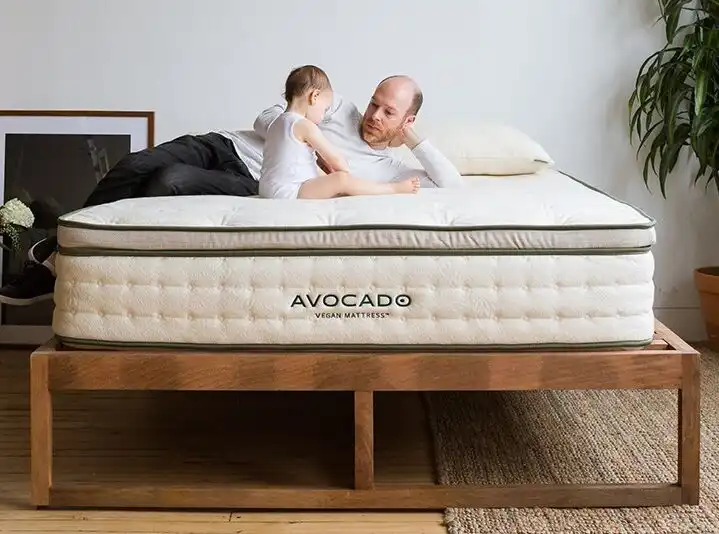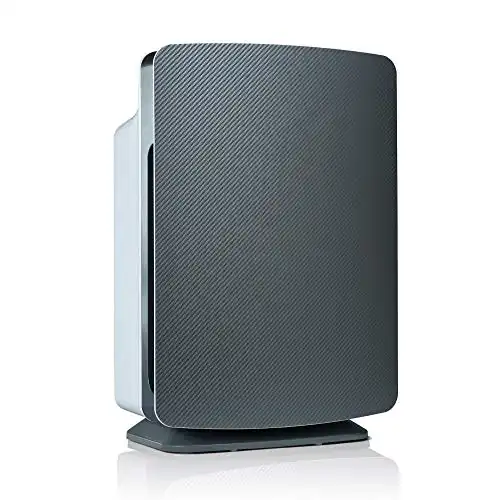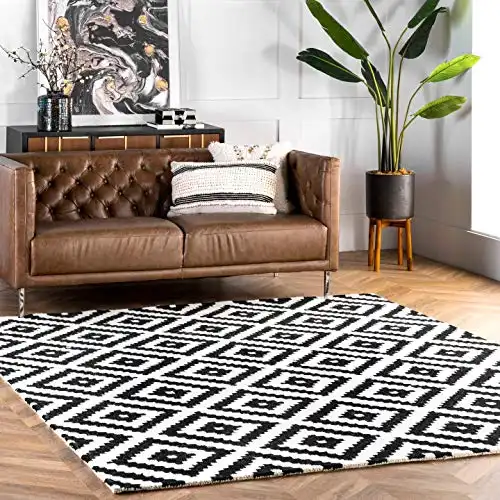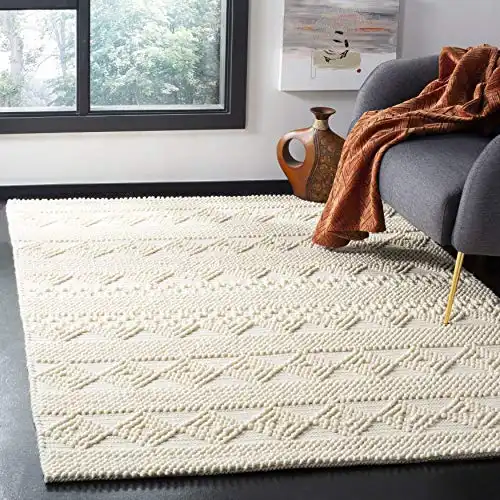- You are here:
- Home »
- Non Toxic Home Poducts »
- Reducing Exposure to PBDEs at Home: Tips and Safer Alternatives
How to Reduce Your Exposure to PBDE Flame Retardants at Home?
Polybrominated Diphenyl Ethers (PBDEs) are flame-retardant chemicals found in everyday items like furniture and electronics. It’s worth noting that emerging evidence suggests a potential connection between PBDEs and adverse health effects, including developmental problems, brain issues in animals, and even cancer.
Fortunately, there are steps you can take to minimize your exposure to these chemicals and create a safer living environment for you and your family.
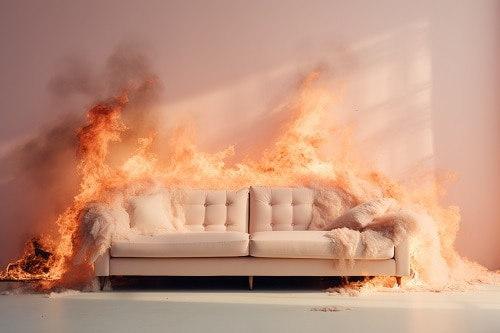
Sources of PBDEs at Home:
PBDEs can be found in many household products, and awareness of these sources is crucial for reducing exposure. Some common sources of PBDEs include:
- Furniture: Upholstered furniture such as couches, chairs, and even vehicle seats may contain foam that has been treated with PBDEs (Polybrominated Diphenyl Ethers).
- Mattresses: In addition to upholstery, foam mattress pads, and other bedding products can also harbor PBDEs. It is important to be aware of this when selecting bedding products, especially for individuals with sensitivities because they come in prolonged contact with the skin.
- Carpets: PBDEs can also be present in the foam padding beneath carpets. It is worth considering when choosing carpets and rugs.
- Children’s Products: Items like foam-based toys and car seats could contain PBDEs. Children often interact closely with these products, so it is important to be mindful of potential chemical exposure. Consider choosing products that are labeled PBDE-free or made with alternative flame-retardant materials.
- Electronics: PBDEs are commonly found in the plastic housings of televisions, computers, and other electronic devices. While the levels of PBDEs in these products have decreased over the years due to regulations, it is still essential to be aware of their presence, especially if you are sensitive to chemicals.
Read More: Are flame Retardants in Mattresses Safe?
Health Risks Posed by PBDEs:
Polybrominated diphenyl ethers (PBDEs) are linked to health concerns. Due to historical production factors, PBDE exposure in the U.S. is significantly greater than in Europe and Asia. In 2004, manufacturers voluntarily stopped producing some PBDEs due to their recognized health risks, but continued manufacturing a variant – DecaBDE, a “possible human carcinogen” according to the U.S. Environmental Protection Agency (EPA).
PBDEs pose serious health risks. Animal studies and epidemiological research reveal that PBDE exposure can harm brain development and promote neurobehavioral issues. PBDEs can also disrupt natural hormones, harm fetal or infant development, and decrease fertility. While exposure to PBDEs from house dust may not always pose health risks, high exposure situations could be harmful.

Tips to Reduce Exposure to PBDEs
Choose Safer Upholstered Furniture:
Opt for non-toxic alternatives, such as non-toxic sofas filled with natural latex, using naturally flame-retardant materials, such as wool. You can also consider sofas filled with CertiPur-certified foam, as this type of foam does not contain PBDEs.
American brands, such as
|
$2,828
|
$2,201
|
$4,122
|
Buy Organic Mattresses and Bedding:
Certified organic mattresses are free from flame retardants, synthetic pesticides, and other toxins commonly found in conventional products. You can also look for bedding made from natural materials like wool, cotton, or bamboo that is certified to be free of chemical treatments. When it comes to natural mattresses and bedding, Naturepedic and My Green Mattress are two reputable brands that you can trust.
|
$1,399
|
$1,549
|
From $1399
|
Replace or Cover Exposed Foam:
If you have furniture with exposed foam, consider replacing them with safer options or covering them with naturally flame-resistant textiles, such as wool. Regular vacuuming around these items can also help reduce exposure.
When mending this type of furniture, wear protective clothing and a face mask. If you’re pregnant, it’s best to leave any repairs to an expert. Also, refrain from reupholstering older foam furniture, as it’s sure to contain PBDEs and other potential toxins.
Use HEPA Vacuum Cleaners and Air Purifiers:
High-efficiency particulate air (HEPA) filter vacuum cleaners can help reduce the amount of PBDEs in your home, as well as other contaminants like dust mites and pollen.
Air purifiers can also be effective in removing these chemicals from your rooms. Place air purifiers in bedrooms and other areas of the house where your family spends a lot of time.
|
|
|
|
Choose Non-Toxic Carpets and Rugs:
Opt for non-toxic carpets certified with Green Label Plus, which adhere to strict emissions standards. Consider natural fiber rugs, such as jute, wool, and sisal, which do not contain flame retardants. If you need a rug pad, choose a natural rubber pad or one made from organic cotton.
By taking these precautions, you can help reduce your family’s exposure to PBDEs and create a healthier living environment. By educating yourself about the sources of these chemicals, you can make smarter choices when it comes to the materials used in your home. Making an effort to buy non-toxic furniture.
|
|
|
$57.99 ($3.87 / Sq Ft)
|
Safer Flame Retardant Alternatives:
Manufacturers are actively exploring and developing safer alternatives to traditional flame retardants like PBDEs. One cool alternative that’s been getting attention is silica, a naturally occurring mineral known for its fire-resistance properties. Silica can provide effective fire protection without relying on harmful chemicals, making furniture and bedding safer for both consumers and the planet.
Plus, some manufacturers are turning to materials like cotton and wool in the quest for safer alternatives. These natural fibers have built-in fire-resistant qualities, meaning extra chemical treatments are less needed.
So if you go for products made with cotton and wool, you can enjoy the benefits of less chemical exposure while still keeping up with efficient fire protection standards. This move towards safer alternatives is a big step forward in promoting safety and sustainability in different industries.
Certificates that Demonstrate Low or No PBDEs
To help you make informed purchases, look for certificates and standards demonstrating the product is low in chemicals like PBDEs. Certifications such as GreenGuard Gold, CertiPur-US, and Green Label Plus indicate reduced chemical exposure.
These certifications ensure that products meet or exceed safety thresholds, so they are a great way to ensure that you and your family are not exposed to the hazardous effects of PBDEs.
Conclusion
In conclusion, it’s important to reduce your exposure to PBDE flame retardants for the well-being of you and your loved ones. By making informed choices about your furniture, bedding, and household items, you can create a healthier and more comfortable living environment.
Embrace safer alternatives like natural latex sofas,
Read More: Best Products for Chemical-Free Home
About the Author Kamila Flieger
My name is Kamila, and I'm passionate about researching non-toxic, organic products for the home. I believe it's so important to create a safe and healthy environment for our families, and I enjoy helping others do the same.






